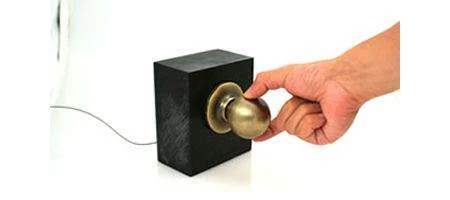Intelligent doorknobs and gesture-controlled smartphones could be on the way, thanks to a new sensing technique developed by Disney Research and Carnegie Mellon University.

Touché is a form of capacitive touch sensing like that used in most smartphone touchscreens used in most smartphones – but capable of sensing capacitive signals across a broad range of frequencies, not just one.
This so-called Swept Frequency Capacitive Sensing (SFCS) means a device knows not only when it is being touched, but to recognize complex configurations of the hand or body that is doing the touching. It only needs one sensing electrode, and the object itself can serve as a sensor – even the human body or a body of water.
“Signal frequency sweeps have been used for decades in wireless communication, but as far as we know, nobody previously has attempted to apply this technique to touch interaction,” says Ivan Poupyrev, senior research scientist at Disney Research.
“Yet, in our laboratory experiments, we were able to enhance a broad variety of objects with high-fidelity touch sensitivity. When combined with gesture recognition techniques, Touché demonstrated recognition rates approaching 100 percent. That suggests it could immediately be used to create new and exciting ways for people to interact with objects and the world at large.”
Like a smartphone touchscreen, Touché is based on capacitive coupling. In a capacitive touchscreen, the surface is coated with a transparent conductor that carries an electrical signal. That signal changes when a person’s finger touches it, and can be monitored to determine if a touch occurs.
By monitoring a range of signal frequencies, however, Touché can derive much more information. Different body tissues have different capacitive properties, so monitoring a range of frequencies can detect a number of different paths that the electrical charge takes through the body.
Among the proof-of-concept applications the researchers have investigated is a smart doorknob. Depending on whether the knob was grasped, touched with one finger or two, or pinched, a door could be programmed to lock or unlock itself, admit a guest, or even leave a reply message, such as “I’ll be back in five minutes.”
The team’s also used the system to enhance a traditional touchscreen by sensing not just the fingertip, but the configuration of the rest of the hand. They created the equivalent of a mouse “right click,” zoom in/out and copy/paste functions, depending on whether the user pinched the phone’s screen and back with one finger or two, or used a thumb.






